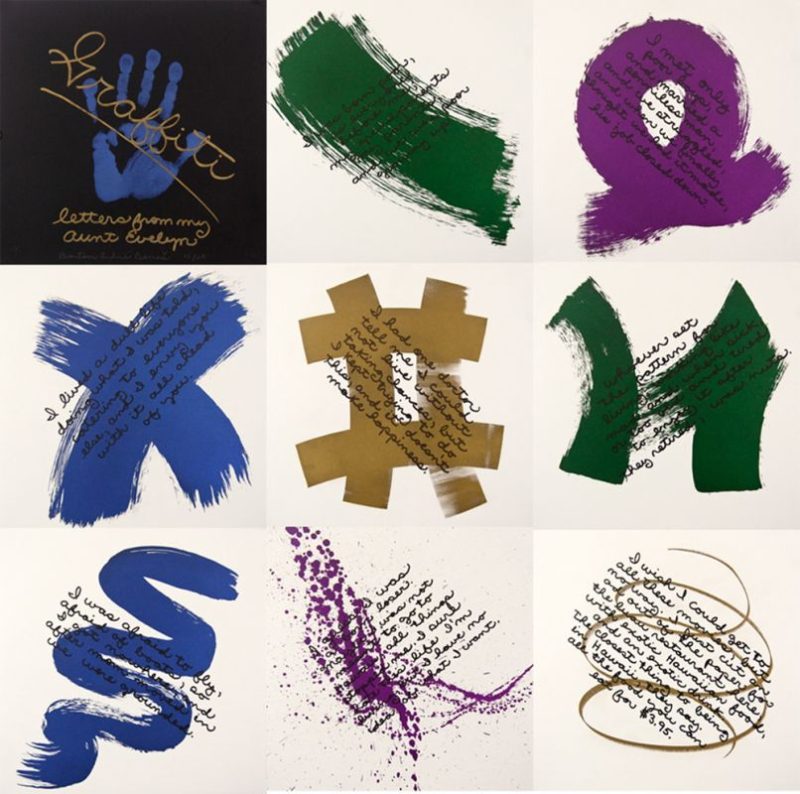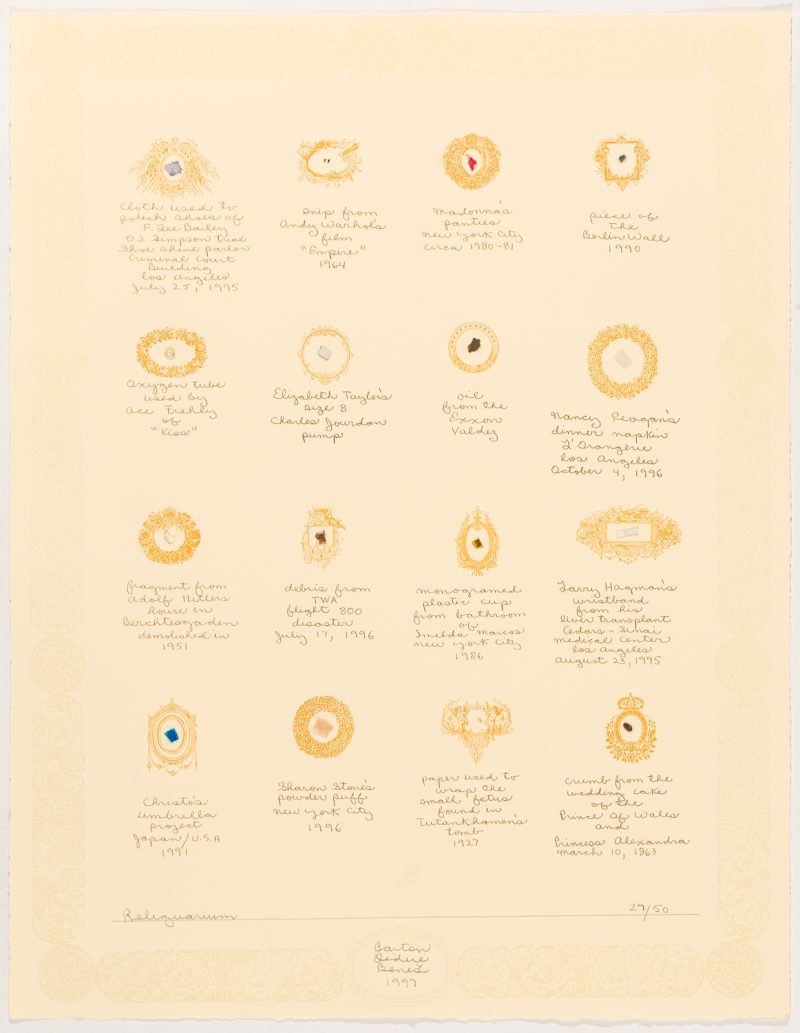Barton Beneš first gained recognition in the 1980s with his whimsical constructions made from shredded currency, followed by his signature “museums” — gridded arrangements of relics spanning from Ancient Egypt to Hollywood. He transformed fragments of our throwaway culture into art that often addressed taboo subjects and used unconventional materials, including cremation ashes, shells, bodily fluids, currency, shredded money, relics, celebrity artifacts, and found objects. As a first-generation veteran of the AIDS crisis, Beneš chronicled his own HIV+ status in his series Lethal Weapons, which incorporated his own blood. This exhibit toured Europe in the 1990s and reached Lund, Sweden, where authorities mandated the installation be heated to 160 degrees Fahrenheit in a hospital oven to ensure it was “safe” for public viewing. These provocative pieces confront HIV/AIDS head-on, blending political activism, visual poetry, and a wicked sense of humor, compelling viewers to confront their fears of death and transmission. Beneš’s work continues to symbolize resistance, engaging a new generation in the ongoing conversation about art and AIDS.
His work has been exhibited nationally and internationally at The Cleveland Museum of Art; North Dakota Museum of Art; The Katonah Museum of Art; The New York Public Library; and Aldrich Museum of Contemporary Art, as well as Centre Pompidou, Paris; Boras Konstmuseum, Sweden; and Old Town Hall, Prague. His work is in the permanent collections of The Art Institute of Chicago, The Smithsonian, The U.S. Mint and North Dakota Museum of Art. Beneš is represented by Pavel Zoubok Gallery in New York.
More Information
New York Times


